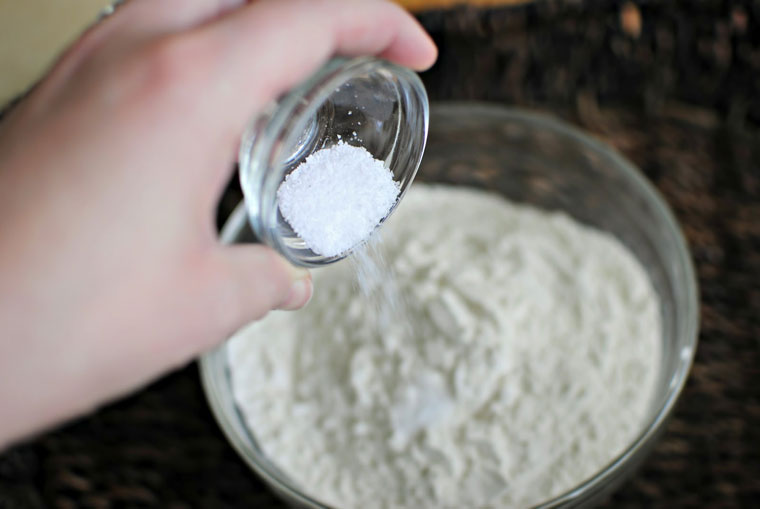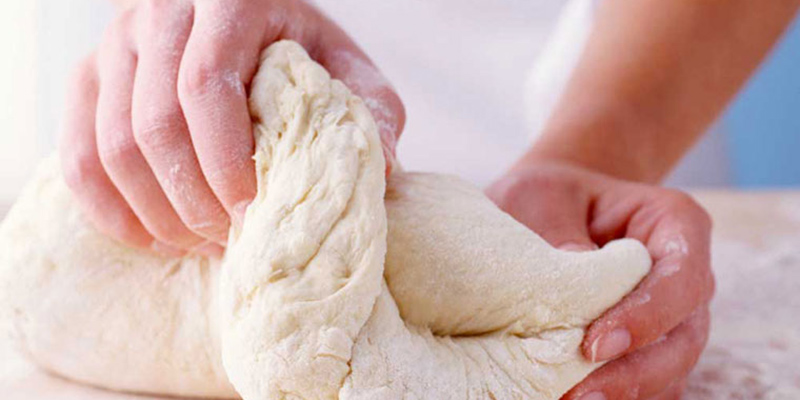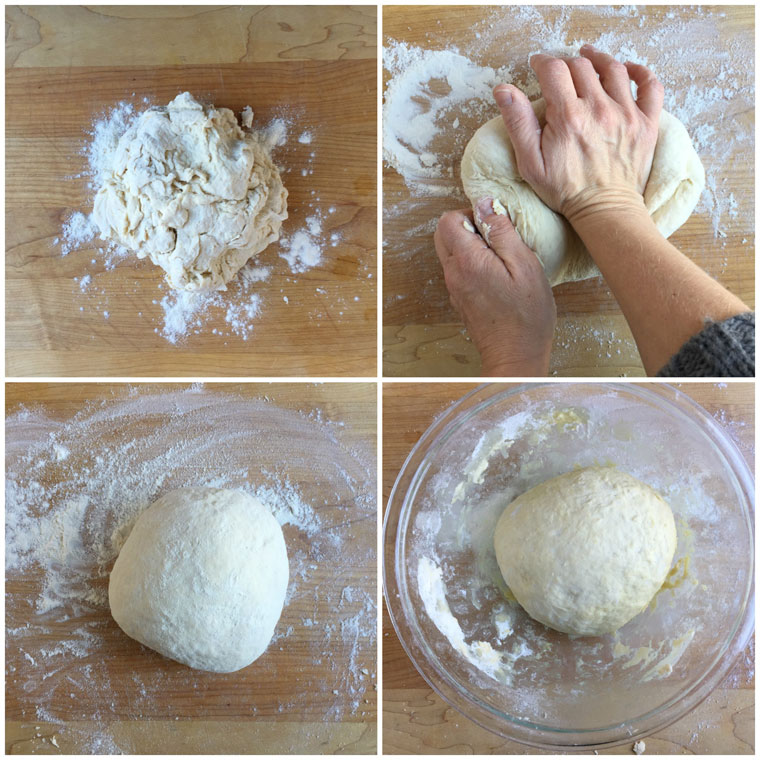1 Let the flour not get moldy

You should add a little salt to the flour (in a ratio of 1 kg of flour to 5 g of salt) and mix well. This mixture helps prevent the flour from getting moldy after storage or the dough from becoming too salty when baking. Many housewives use this method to preserve leftover flour for baking.
Learn more:
2 Knead the dough smooth

If you only add warm water to the flour for kneading, the flour will clump together, reducing the deliciousness of the cake. Therefore, you should add a little salt to the dry flour and mix well first, then add water for kneading. This will result in a smoother dough.
3 Prevent the dough from sticking to your hands

When kneading the dough, if it sticks to your hands, you can sprinkle some flour on the table surface (you can also sprinkle it on the dough or rub it on your hands) and continue kneading. Alternatively, you can put the dough in a bowl, cover it tightly, and refrigerate for about 1 hour before kneading again.
4 Handle sticky dough

If you encounter the problem of the dough being too sticky, use a dry, clean cloth to wrap the dough and let it sit for about 15-20 minutes. If the dough is still sticky, leave it for longer or wrap the dough in a different cloth. The excess water in the dough will gradually seep into the cloth, helping the dough become less sticky.
5 Shorten the dough proofing time

– Proofing the dough after kneading will make the cake fragrant and fluffy, but it can take several hours to half a day. So, to shorten the proofing time, you can add a little alcohol in the middle of the dough and cover it with a damp cloth. This will help the dough rise quickly and become soft and fluffy.
– One way to determine if the dough has proofed enough is to press your finger into the dough. If the dent does not bounce back, it is proofed enough. If the dent bounces back, it needs more proofing time. If the dough collapses, it means it has overproofed.
6 Handle sour dough

If you let the dough proof for too long, the cake will have a strong and slightly sour smell due to excessive fermentation. To fix this, you can add a little salt to the dough (at a ratio of 5 g of salt to 500 g of flour). This method will help eliminate the sourness and prevent the dough from turning dark yellow.
Hopefully, with these small tips, your baking process will become easier, and the cake will be delicious as desired.






























